Share
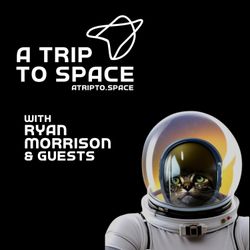
A Trip to Space
An exploration of space, the orbital economy and the people involved
Latest episode

10. Episode 10: A Trip into the Deep Past
28:48||Season 1, Ep. 10Space news Hubble still down: NASA is trying to fix the HUBBLE SPACE TELESCOPE after a memory module failure forced the agency to shut down the iconic orbiting observatory. The problem is with the payload computer, which halted o June 13, stopping hte spacecraft from collecting science data. The telescope andother instruments are all working as expected, but they rely on the payload computer to operate. Over the next week, the team will continue to assess hardware to identify if something else may be causing the problem. Thousand sign up to fly to space: The European Space Agency (ESA) is looking for six astronauts to join its core, as well and 20 reservists from academia. They will travel to the International Space Station (ISS) and one day on to the NASA Lunar Gateway that will be in orbit around the Moon. A total of 22,589 people have applied, and submitted a valid medical certificate, in the hope of going into the next round. The six will be confirmed late in 2022. Are they watching us? There could be as many as 29 potentially habitable worlds ‘perfectly positioned' to observe the Earth if they hold an intelligence civilisation, according to a new study. Exploring ways in which we find exoplanets, that is worlds outside the solar system, the team from Cornell University reversed the process to see which could spot us. While exoplanets haven't been detected around all of the stars that can observe the Earth, the team estimate 29 will have a rocky world in the habitable zone that are well positioned to also detect radio waves emitted by humans over 100 years ago. A Virgin licence: Space tourism firm Virgin Galactic has been given the go ahead by the FAA to take paying customers to the edge of space, in a first for the aviation industry. The firm said there were still three test flights to go before it takes the first commercial astronauts next year, but this is an important step in that journey. The new licence from the Federal Aviation Authority (FAA) gives the firm the right to send paying customers into space, and not just as part of a test flight. Upcoming launches This week: SpaceX Falcon 9 • Transporter 2 from Cape Canaveral Space Force Station, Florida. A SpaceX Falcon 9 rocket will launch the Transporter 2 mission, a rideshare flight to a sun-synchronous orbit with numerous small microsatellites and nanosatellites for commercial and government customers. June 29: Soyuz • Progress 78P from Baikonur Cosmodrome, Kazakhstan. A Russian government Soyuz rocket will launch the 78th Progress cargo delivery ship to the International Space Station. The rocket will fly in the Soyuz-2.1a configuration. Delayed from March 19. July 1: Soyuz • OneWeb 8 from Vostochny Cosmodrome, Russia. A Russian Soyuz rocket will launch 36 satellites into orbit for OneWeb, which is developing a constellation of hundreds of satellites in low Earth orbit for low-latency broadband communications. The Soyuz-2.1b rocket will use a Fregat upper stage. July: Falcon 9 • Starlink from Vandenberg Space Force Base, California. A SpaceX Falcon 9 rocket will launch on the first dedicated mission with Starlink internet satellites from Vandenberg Space Force Base. This mission will deploy an unspecified number of Starlink satellites into a high-inclination orbit. Exoplanet of the week: TYC 8998-760-1 c This hot, very large planet is the second to be directly imaged – that is, pixels of light captured by telescope from the planet itself – as it orbits a Sun-like star some 300 light-years away. An international team of scientists published its discovery of the star's first directly imaged companion in February 2020. Key facts: These two planets – TYC 8998-760-1 b and now, c – are considered the first multi-planet system to be directly imaged around a Sun-like star. The star is a baby version of our Sun, only 17 million years old. The extreme youth of this system is a big part of why astronomers were able to capture direct images: The planets are so hot from their recent formation that they still glow brightly enough to be seen from our vantage point, even though they're hundreds of light-years away. This image, captured by the SPHERE instrument on ESO’s Very Large Telescope, shows the star TYC 8998-760-1 accompanied by two giant exoplanets. This is the first time astronomers have directly observed more than one planet orbiting a star similar to the Sun. The image was captured by blocking the light from the young, Sun-like star (on the top left corner) using a coronagraph, which allows for the fainter planets to be detected. The bright and dark rings we see on the star’s image are optical artefacts. The two planets are visible as two bright dots in the centre and bottom right of the frame. Details: Planets b and c are much farther away from their star than, say, Jupiter and Saturn are from the Sun. Planet b is 160 times the Earth-Sun distance, planet c is about 320 times. Just for comparison, Jupiter is 5 times the Earth-Sun distance, Saturn 10 times. And these planets are bruisers. The inner planet, b, is about 14 times the mass, or heft, of Jupiter, c about 6 times. Planet b, in fact, might even be a brown dwarf, a kind of failed star considered neither a star nor a planet, but somewhere in between. Fun facts: Thousands of planets around other stars – exoplanets – have been confirmed so far in our galaxy, which likely holds trillions. But the vast majority are found through indirect means – measuring wobbles in the star's motion caused by the gravity of orbiting planets, or the tiny dip in starlight as a planet crosses its star's face. Only a few dozen of the exoplanets found so far have been directly imaged. And direct images of multi-planet systems are rarer still: only two others so far, both with stars very different from our Sun. The new system, with its Sun-like star, might have some characteristics in common with the very early history of our own solar system. It offers an exciting opportunity for scientists to learn more about the formation of such systems, including our own. The discoverers: Both planets in this system were discovered by an international team of scientists led by Alexander J. Bohn of Leiden University in the Netherlands. They used the SPHERE instrument on the Very Large Telescope (VLT) at the European Southern Observatory in Chile to observe the star and its planets in February 2020. The planet was entered into NASA's Exoplanet Archive on July 23. More details on this planet and its companion from NASA. Cosmic Dawn was just 250 million years after the Big Bang Cosmic dawn, that is the moment the first stars in the universe started emitting light, happened between 250 and 350 million years after the Big Bang, a study revealed. Studying Hubble telescope images from galaxies 550 million years after the Big Bang, allowed UCL and the University of Cambridge experts to calculate the age of the oldest stars in those galaxies, and in turn estimate the time of cosmic dawn. The team say that the James Webb space telescope, scheduled for launch in November, will be sensitive enough to observe the first light from these stars. They will find the first moment of galactic light by searching back for the dark ages of the universe, then looking for tell-tale dots of light from hydrogen-rich stars. The stars will be significantly larger, burn much brighter and burn out much more quickly than modern stars, creating a kind of ‘cosmic firework show,' the team said. One strange supernova Scientists have confirmed a new type of stellar explosion that can explain why a 1,000 year old supernova was so bright our ancestors could see it for 23 days. Described as an ‘electron capture supernova,' this is a destructive event first theorised 40 years ago, but only now confirmed from observations. Electron capture supernova are thought to arise from the explosions of massive super-asymptotic giant branch (SAGB) stars, for which there is little evidence. Scientists at Las Cumbres Observatory, a network of telescopes run from Goleta, California, scoured space for the telltale signs of this explosion and their output. Doing so also solved a mystery dating back to 1054 CE, when a bright light was seen in the daytime for 23 days all around the world, it is though this became the beautiful crab nebula, which has a 5.5 light year radius and is about 1,000 years old. These ‘new' types of supernova sit between those created when a white dwarf pulls in matter from another star, and the supergiant explosions that create black holes. Percy took a selfie Space Agency NASA has taken a selfie with the Perseverance rover – a right of passage for all rovers, and one the Chinese Mars rover has also undertaken. Selfies allow engineers to check wear and tear on the rover. But they also inspire a new generation of space enthusiasts: Many rover team members can cite a favorite image that sparked their interest in NASA. “I got into this because I saw a picture from Sojourner, NASA’s first Mars rover,” said Vandi Verma, Perseverance’s chief engineer for robotic operations at NASA’s Jet Propulsion Laboratory in Southern California. Verma worked as a driver for the agency’s Opportunity and Curiosity rovers, and she helped to create Curiosity’s first selfie, snapped on Oct. 31, 2012. “When we took that first selfie, we didn’t realize these would become so iconic and routine,” she said Video from one of Perseverance’s navigation cameras shows the rover’s robotic arm twisting and maneuvering to take the 62 images that compose the image. What it doesn’t capture is how much work went into making this first selfie happen. Here’s a closer look. The post Episode 10: A Trip into the Deep Past first appeared on Ryan Morrison.
More episodes
View all episodes
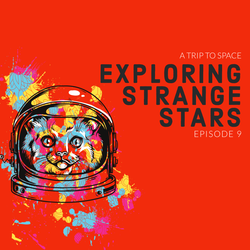
9. Episode 9: A Trip to Strange Stars
35:39||Season 1, Ep. 9This week in space news China in space: The Chinese Space Agency has sent a trio of astronauts to spend the next three months of the Tiangong space station. This is a brand new modular space station built and operated by China and they arrived on a Chinese spaceship sent up on a Chinese-made rocket. The Chinese and Russian space agencies will also work together to begin construction of a base on the surface of the moon in 2026, due for completion by 2036 – but they won't be sending astronauts until after it is fully operation and the robots have had a chance to explore. Boeing boeing … going? NASA is working with Boeing on sending the Starliner crew capsule into space for another test this July. Starliner was originally due to be operational, ferrying crew to the ISS last year, working alongside the SpaceX Crew Dragon, but it has been hit by problems. For the new test Starliner will launch atop a United Launch Alliance Atlas 5 rocket without a crew on board. IF it goes to plan the first crewed mission could be towards the end of this year with astronauts Barry Wilmore, Nicole Mann and Mike Fincke on board. Betelgeuse had gas! The red supergiant star betelgeuse, found on the shoulder of the hunter in Orion's Belt, which began mysteriously dimming last year was just being blocked by a cloud of gas and dust, according to a new study. Astronomers from France created a computer simulation based on images from the Very Large Telescope in Chile to determine the Great Dimming was caused by the star ejecting a bubble of gas and giant blobs of plasma moving on its surface. The temperature drop from the giant blobs led to the creation of an opaque dust which dimmed its appearance when viewed from Earth. Making space sustainable: The World Economic Forum has launched a new Space Sustainability Rating, designed to shed light ont he problem of space junk and the impact it is having on our orbital evnironment. The argument is that it is a problem one single government can't solve, with rules and enforcement from multile nations required to solve the problem. It will work like nutrition and energy efficiency labels, making it clear what companies and organisations are doing to improve the near-Earthenvironment. In other news: NASA has a new deputy administrator, after former astronaut Pam Pelroy was confirmed by the senate, and the opportunity to apply to be a European Space Agency astronaut has passed. The deadline for entries closed on Friday June 18th. Launches this week June 24: Launch site: SLC-40, Cape Canaveral Space Force Station, Florida – A SpaceX Falcon 9 rocket will launch the Transporter 2 mission, a rideshare flight to a sun-synchronous orbit with numerous small microsatellites and nanosatellites for commercial and government customers. Moved up from July. June 25: Launch site: Plesetsk Cosmodrome, Oblast, Russia – A Roscosmos Soyuz 21.b will send a Russian military intelligence ELINT satellite into heliosynchronous orbit. Exoplanet of the week HD 209458 b (nickname “Osiris”) The first planet to be seen in transit (crossing its star) and the first planet to have it light directly detected. The HD 209458 b transit discovery showed that transit observations were feasible and opened up an entire new realm of exoplanet characterization. The planet is 1.3 times larger than Jupiter, or about 220 times the size of the Earth in terms of mass. It orbits very very close to its star – just one eight that of Mercury around the Sun – going around its star every 3.5 days. That means a year on Osiris is just 3.5 Earth days – meaning you'd have over 100 birthdays per Earth year if you somehow managed to live on the strange hot world. Although given it is a gas giant, based on both the high mass and volume, there wouldn't be much of a surface to stand on if you did visit. It belongs to a type of extrasolar planet known as ‘hot Jupiters' – Giant, gaseous planets in low orbits – with a surface temperature more than twice that of Venus – at a whopping 1,000 degrees Celsius. It's about 150 light years from Earth and the parent star is a 8th magnitude G-type main sequence star slightly larger than the Sun found in the constellation of Pegasus and visible with a good small telescope. If you want to try and find it: Right ascension22h 03m 10.7728sDeclination+18° 53′ 03.550″ The planet was first discovered in 1999 and shot to fame in 2009 after astronomers announced ‘water vapour' in the atmosphere – with follow up studies suggesting it is an example of a ‘carbon planet'. On 23 June 2010, astronomers announced they have measured a superstorm (with windspeeds of up to 7000 km/h) for the first time in the atmosphere of Osiris, which has extremely hot day side and a cooler night side. It was the first planeetary atmosphere outside the solar system ot be measured, and by 2004 astronomers found an enourmous envelope of hydrogen, carbon and oxygen around the planet reaching temperatures of 10,000 Kelvin. The exosphere goes out as far as three times the radius of Jupiter, suggesting hte planet oculd be losing up to 500 million kg of hydrogen per second. It is thought this could be common among planets orbiting Sun-like stars closer than 0.1 AU. Its ionised magnetic field may prevent all the atmosphere from disappearing. A 2009 study found evidence of water vapour, carbon dioxide and methane in the atmosphere, refined in 2021 to reveal water vapour, carbon monoxide, hydrogen cyanide, methane, ammonia and acetylene. These are consistent with high carbon levels and suggest it may be a prime example of a ‘carbon planet‘. Features Each week we expand on a number of big news stories and explore some major astronomical discoveries. This includes the latest in space science, tech and research. This is the features section of the podcast. From the latest NASA initiatives to cutting edge space science. We will explore the ideas through interviews, audio from official sources and traditional broadcast journalism. A large star called What is That? VVV-WIT-08, or the ‘large star that blinked' was a serendipitous discovery by an international team of astronomers led by Leigh C Smith from the University of Cambridge. They found that the star decreased in brightness by a factor of 30 – to the point it almost disappeared from the sky. Stars commonly pulsate or are eclipse by another star in a binary system, but this one ‘blinked' for months before brightening again. Found some 25,000 light years away from Earth near the galactic centre, VVV-WIT-08 may belong to a new class of ‘blinking giant' star found in a binary system. It is 100 times larger than the Sun and is eclipsed by another stellar object every few decades – this is a companion object in a shared orbit, or within its orbit we have yet to discover. This could be nother star or a very large planet surrounded by a disc of dust that covered the giant star. When viewed from the Earth this would have the effect of causing it to disappear then reappear – or ‘blink'. “It’s amazing that we just observed a dark, large and elongated object pass between us and the distant star and we can only speculate what its origin is,” said co-author Dr Sergey Koposov from the University of Edinburgh. They used computer modelling to determine whether this object was something else within the heavily populated central region of the Milky Way – rather than something in a shared orbit with the giant star. However, simulations showed that there would have to be an implausibly large number of dark bodies floating around the Galaxy for this scenario to be likely. One other star system of this sort has been known for a long time. The giant star Epsilon Aurigae is partly eclipsed by a huge disc of dust every 27 years, but only dims by about 50%. There are certainly more to be found, but the challenge now is in figuring out what the hidden companions are, and how they came to be surrounded by discs, despite orbiting so far from the giant starLeigh Smith A second example, TYC 2505-672-1, was found a few years ago, and holds the current record for the eclipsing binary star system with the longest orbital period ⎼ 69 years ⎼ a record for which VVV-WIT-08 is currently a contender. VVV-WIT-08 was found by the VISTA Variables in the Via Lactea survey (VVV), a project using the British-built VISTA telescope in Chile and operated by the European Southern Observatory, that has been observing the same one billion stars for nearly a decade to search for examples with varying brightness in the infrared part of the spectrum. Project co-leader Professor Philip Lucas from the University of Hertfordshire said, “Occasionally we find variable stars that don’t fit into any established category, which we call ‘what-is-this?’, or ‘WIT’ objects. “We really don’t know how these blinking giants came to be. It’s exciting to see such discoveries from VVV after so many years planning and gathering the data.” There now appear to be around half a dozen potential known star systems of this type, containing giant stars and large opaque discs. “There are certainly more to be found, but the challenge now is in figuring out what the hidden companions are, and how they came to be surrounded by discs, despite orbiting so far from the giant star,” said Smith. “In doing so, we might learn something new about how these kinds of systems evolve.” Reference:Leigh C Smith et al. ‘VVV-WIT-08: the giant star that blinked.’ Monthly Notices of the Royal Astronomical Society (2021). DOI: https://doi.org/10.1093/mnras/stab1211 China in space The Chinese space agency has sent a trio of astronauts up to their new station, named Tiangong, where they will stay for the next three months and prepare the facility for the next two modules. It is significantly smaller than the ISS, with just 1,700 cubic feet of living space compared to more than 11,000 cubic feet of space for humans on the ISS. There will be 11 trips, including four with a crew to the station over the coming two years to finish construction, including launching the final two research modules. When complete, Tiangong will have a total of three modules, making it closer to the Soviet-era Mir station than the ISS, which has 16 modules run by different nations. Russia and China going to the moon: China has signed a memorandum of understanding, and outlined a timetable with Russia for a joint base on the surface of the Moon – due to begin construction in 2026. Tiangong is currently expected to out live the ISS, as it is scheduled to operate until at least 2031, and possibly longer. The first module for Tiangong is the Tianhe, which is the primary living quarters for the new Chinese station. This will be joined by Wentian and Mengtian, two laboratory modules due to launch next year. This was China's third space station, although this is the first to incorporate a modular design, similar to, but much smaller than the International Space Station. Some of the 11 launches will be robotic and automated missions to place aspects of the station in orbit, others will be crewed to have astronauts install the modules. Once the entire station is complete, it is expected that future missions will be purely scientific, similar to those of the International Space Station. Much like the ISS, China is also expected to invite other nations to take part or send astronauts as part of the small crew. This happened with Mir space station, that saw British astronaut Helen Sharman spend time on the station with two Russian cosmonauts. Mission commander Nie Haisheng, 56, and fellow astronauts Liu Boming, 54, and Tang Hongbo, 45, are former People's Liberation Army Air Force pilots with graduate degrees and strong scientific backgrounds. All Chinese astronauts so far have been recruited from the military, underscoring its close ties to the space program. Boeing, Boeing Going? Boeing will send an uncrewed Starliner into space next month, with the hope of sending a crewed capsule up into orbit by the end of the year, according to NASA. This follows a rocky year for the aviation firm, whose Starliner capsule was beset with technical problems preventing it from joining the SpaceX Crew Dragon in ferrying astronauts to the ISS last year. Teams inside the Starliner production factory at NASA’s Kennedy Space Center in Florida recently began fueling the Starliner crew module and service module in preparation for launch of Orbital Flight Test-2 (OFT-2) at 2:53 p.m. EDT on Friday, July 30. The fueling operations are expected to complete this week as teams load propellant inside the facility’s Hazardous Processing Area and perform final spacecraft checks. Once fueling operations are complete, teams from Boeing and United Launch Alliance (ULA) will prepare to transport Starliner to the Vertical Integration Facility (VIF) at Space Launch Complex-41 on Cape Canaveral Space Force Station for mating with ULA’s Atlas V rocket. In preparation for Starliner’s next flight, NASA and Boeing have closed all actions recommended by the joint NASA-Boeing Independent Review Team, which was formed as a result of Starliner’s first test flight in December 2019. The review team’s recommendations included items relating to integrated testing and simulations, processes and operational improvements, software requirements, crew module communication system improvements, and organizational changes. Boeing has implemented all recommendations, even those that were not mandatory, ahead of Starliner’s upcoming flight. During the OFT-2 mission, Starliner will test its unique vision-based navigation system to autonomously dock with the space station and deliver approximately 440 pounds, or roughly 200 kilograms, of cargo and crew supplies for NASA. Starliner is expected to spend five to 10 days in orbit before undocking and returning to Earth, touching down on land in the western United States. Providing Starliner’s second uncrewed mission meets all necessary objectives, NASA and Boeing will look for opportunities toward the end of this year to fly Starliner’s first crewed mission, the Crew Flight Test (CFT), to the space station with NASA astronauts Barry “Butch” Wilmore, Nicole Mann, and Mike Fincke on board. NASA’s Commercial Crew Program is working with industry through a public-private partnership to provide safe, reliable, and cost-effective transportation to and from the International Space Station, which will allow for additional research time and will increase the opportunity for discovery aboard humanity’s testbed for exploration. The space station remains the springboard to space exploration, including future missions to the Moon and eventually to Mars. How will astronauts live on the Moon? ICON, a developer of advanced construction technologies including robotics, software and building materials, partnered with SEArch+ to work with NASA on the development of a space-based construction system to support future exploration of the Moon. SEArch+’s design for ICON’s Project Olympus, is a sustainable outpost consisting of habitats, sheds, landing pads, blast walls, and roadways. “The Lunar Lantern” aims to exceed the factors of safety for its inhabitants in support of mankind's first extended mission on the Moon’s surface. It fits within the wider NASA Artemis goal of ensuring a sustainable and sustained human presence on the moon once astronauts return in 2024 on Artemis 3. The main habitat of the Lunar Lantern would include three structural components – a base isolator, tension cables and a whipple shield. These would act as seismic dampeners to absorb shocks from moonquakes. The shield will act to protect inhabitants from micrometeorites, extreme heat and solar radiation. There will also be landing pads for rockets – possibly the SpaceX Lunar Starship, roadways, blast walls and more. NASA won't be the only nation sending astronauts to the Moon, although they will likely get there next. China and Russia have outlined their timetable for future lunar missions, including a new base on the surface that will begin construction in 2026 and finish by 2036. The post Episode 9: A Trip to Strange Stars first appeared on Ryan Morrison.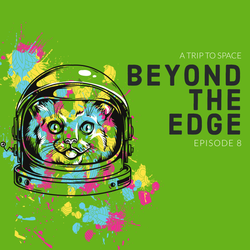
8. Episode 8: A Trip Beyond the Edge
01:04:34||Season 1, Ep. 8This week on the show we look at the European Space Agency's planned trip to Venus, new competition for SpaceX in the launch market and what is a solar eclipse? We also launch a new feature – exoplanet of the week – where I trawl through NASAs vast exoplanet archive, pick one that looks interesting and go on a virtual vacation. Envision is the name of the new ESA mission to Earth's ‘evil twin,' as the agency puts it. The probe will study the atmosphere nature and explore down to the core of the inhospitable world. It will launch in the early 2030s and include NASA instruments, making it compatible with the DAVINCI+ and VERITAS missions being sent to the world by the US agency. Sticking with the European Space Agency, ESA has announced its science themes as part of its Voyage 2050 planning, outlining projects and missions that will happen from the 2030s onward. ‘The selection of the Voyage 2050 themes is a pivotal moment for ESA’s science programme, and for the future generation of space scientists and engineers,' says Günther Hasinger, ESA Director of Science. Themes include habitability of the moons of the outer planets in the solar system, a search for temperate exoplanets and the less accessible regions of the Milky Way galaxy and probes of the early Universe. SpaceX has more competition, this time in the form of the Relativity Space, 3D printed and fully reusable Terran R rocket, that will take on the Falcon 9. It is a few years away from launch but a new $650 million funding round could bring that closer to reality sooner than previously expected, making them the latest, after Rocket Labs, to enter this heavier lift market. Speaking of rocket firms, Jeff Bezos, the founder of Amazon and Blue Origin, announced he'd be heading to space on the New Shepherd rocket on July 22. This flight will go up to about 100km, have 10 minutes weightless and return. This could make Bezos the first of the three billionaire space firm founders to make it up into space on their own launch vehicle – beating out Sir Richard Branson, who is due to go up on VSS Unity later this year. View this post on Instagram A post shared by Jeff Bezos (@jeffbezos) However, Branson confirmed that he was looking to go up on an earlier test flight – possibly the very next trip – potentially allowing him to beat Bezos into space by a few days or weeks. This week also saw a partial solar eclipse across the UK and US, as well as a full ‘ring of fire' eclipse in Canada, Greenland and Russia – but what is an eclipse and when is the next one? I explore these questions and more, as I take a slightly more detailed look at our star and the unique relationship between the Earth, Moon and Sun. Finally, Perseverance is heading south on Mars to explore the ancient lakebed of Jezero Crater in a bid to find traces of ancient microbial life. This marks the end of system testing, and the start of the true purpose for the rover on the Red Planet. Driving to a low-lying scenic overlook to survey some of the oldest geologic features within the crater. Exoplanet of the week: Kepler-452b (Earth's Cousin)Classic SciFi read: HG Well's A Modern Utopia – Chapter 5The post Episode 8: A Trip Beyond the Edge first appeared on Ryan Morrison.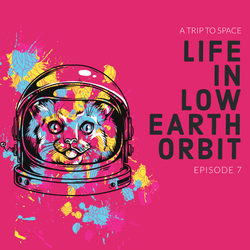
7. Episode 7: A Trip to LEO and Venus
54:51||Season 1, Ep. 7NASA is going back to Venus, selecting the VERITAS and DAVINCI+ missions as part of the Discovery program, with both scheduled to launch between 2028 and 2030. These two missions to Earth's hellish twin will aim to find out why it’s so hot and inhospitable, why its early development went from being Earth-like to hellish and what hides beneath the thick acidic clouds. A jellyfish galaxy is a strange form of star cluster. It has a tail making it look like a jellyfish – and a team from the Max Plank Institute want you to help them find out why – through the Zooniverse citizen science website. Canadaarm2 is the Canadian Space Agency contribution to the ISS. It helps spaceships dock and installs equipment without astronauts having to take an EVA – but it had a recent close encounter with a piece of space debris. ESA has launched a debris coding challenge. Space junk it is a growing problem and to encourage coders and STEM students to think about the problem, the European Space Agency launched a challenge asking people to calculate the origin of fictional space junk when given just their trajectory. We also look at the ESA astronaut program, with the opportunity to apply to become a European astronaut coming to close in just over a week. Virgin Galactic are sending an bioastronautics researcher up to space. Kellie Gerardi will go up on VSS Unity from next year to test fluid dynamics in low gravity, an undersuit with sensors and look out of the window at Earth. And chapter three of HG Wells A Modern Utopia, where we start to explore the idea of another world. The post Episode 7: A Trip to LEO and Venus first appeared on Ryan Morrison.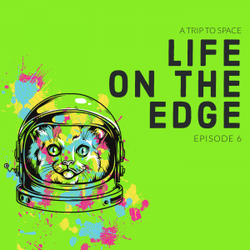
6. Episode 6: A trip to the edge
26:52||Season 1, Ep. 6This week on the show we find that the Milky Way may not be all that unique, plasma from a microsecond after the Big Bang may have made all atoms, SpaceX may be creating a monopoly and the second chapter in our reading of HG Wells Modern Utopia. We also explore whether we are heading for a Wild West in space, with a lack of coherent global regulation leading to a spike in the number of satellites sharing an orbit. In a slightly related area, ArianeSpace, the main European launch provider, ESA partner and operator of many Soyuz rockets, believes SpaceX is monopolising low Earth orbit. After covering space launch and policy, we move on to space science – with two big studies published in the last week before revealing more about our universe. The first goes right back to a microsecond after the Big Bang, when the only matter about, Quark–gluon plasma, turned into all of the atoms in the universe – at least their cores – due to the rapid hot expansion. QGP is a state of matter in which the elementary particles that make up the hadrons of baryonic matter are freed of their strong attraction for one another under extremely high energy densities. (Wikipedia). The second study we explore looked at our Milky Way, well actually it looked at another galaxy 320 million light years away – but by studying it side on they found it was remarkably similar to the Milky Way. This allowed them to theorise that, rather than being unique and created from an explosive merger with another galaxy, the Milky Way is typical off spiral galaxies and formed slowly over time. We finish with chapter two of HG Well's Modern Utopia.Finally, it’s time for chapter two in our reading of HG Wells Modern Utopia The 1905 work was serialised in the Fortnightly Review and is presented as a tale told by a character known as the ‘Owner of the Voice’. CREDITS: Background audio: Icons8, PixabayAI voices: Podcastle.aiText for Modern Utopia: Project GutenbergThe post Episode 6: A trip to the edge first appeared on Ryan Morrison.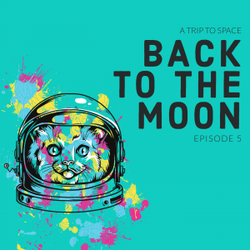
5. Episode 5: A Trip back to the Moon
41:33||Season 1, Ep. 5This week on the A Trip to Space podcast we take a trip back to the Moon, where ESA and NASA are preparing to make exploration much easier and more sustainable. First The European Space Agency has announced plans to build a constellation of a navigation and communication satellites in orbit around the Moon that could one day enable it to become the ‘eighth continent'. This network would be open to all travellers to the lunar surface and orbit – both human and robotic and from any space agency or space businesses, with the goal of making lunar exploration cheaper and more sustainable. On that note, NASA announced the VIPER mission, to send a rover to the lunar South Pole in search of frozen water and other potentially beneficial researchers future human explorers could utilise. NASA plans to send the first woman and next man to the lunar surface in 2024, a year after this robotic explorer will scope out the same location and landscape. But that's not all we cover in this packed show. NASA has confirmed it ‘may' have discovered organic salts on the surface of Mars – thanks to the chemistry lab in the belly of the long-running Curiosity rover. These salts are like ancient relics, signs that life may once have been present on Mars, but all other larger molecules have since been removed due to radiation – leaving just these tiny remnants. NASA says ‘may' as it is impossible to tell if they are organic in origin with the equipment Curiosity has, but studies on Earth seem to suggest they should be, so future missions will explore this idea in more detail We also come a little closer to home, with Virgin Galactic's news that it completed the first ever human spaceflight operating out of New Mexico – sending its VSS Unity up beyond 55 miles. Richard Branson’s Virgin Galactic have successfully reached space for the first time from New Mexico with their spaceship VSS Unity – after it separated from mothership VSS Eve. This flight meant that New Mexico had become the third state to launch humans into space. Unity reached Mach 3 after being released from Eve and reached space at 55.45 miles before gliding back to Spaceport America. CJ Sturckow and Dave Mackay were in the flight deck of Unity when it reached space with CJ becoming the first person to fly to space from three different US states. I also finish the show with a reading of the first chapter from HG Wells Modern Utopia, in a new feature exploring some old, public domain science fiction. The 1905 work was serialised in the Fortnightly Review and is presented as a tale told by a character known as the ‘Owner of the Voice'. The premise is that there is a planet exactly like Earth, so similar in fact all the current people on Earth also exist ‘in duplicate' on this world, but they have different habits, traditions, knowledge, ideas, clothing and appliances.' But they all speak English, as, according to Wells ‘should we be in Utopia at all, if we could not talk to everyone?' Then we explore Proxima Centauri b, the first planet in the Proxima Centauri system, which is the smallest star in the triple star system Alpha Centauri. Proxima Centauri b was first discovered in 2016 and is thought to be a slightly larger than Earth terrestrial world, orbiting within the habitable zone of its star – meaning it may have liquid water. It hit the headlines recently when unexplained radio signals were detected coming from the star system, although radio astronomers now believe this was just natural inference, rather than an intelligent alien race saying ‘hi'. The system is also popular due to the fact it is the closest star system to the Earth at 4.2465 light-years (1.3020 pc) away from the Sun in the southern constellation of Centaurus. Breakthrough Starshot is a mission to send a fleet of tiny solar sail powered probes to Proxima Centauri travelling at 20% of the speed of light propelled by around 100 gigawatts of Earth-based lasers. The probes would perform a fly-by of Proxima Centauri to take photos and collect data of its planets' atmospheric compositions. It would take 4.25 years for the information collected to be sent back to Earth. We may get some indication sooner than that though, according to astronomer Avi Loeb, who predicts that the James Webb Space Telescope will be able to see evidence of artificial light on the planet.The post Episode 5: A Trip back to the Moon first appeared on Ryan Morrison.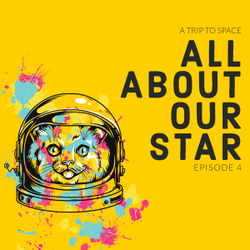
4. Episode 4: A Trip to the Sun
29:03||Season 1, Ep. 4This week on A Trip to Space we take a Trip to the Sun, exploring the where, why, how hot and what for of our own host star – a G-type main-sequence star at the centre of the solar system that formed 4.6 billion years ago. The Sun is often described as a yellow dwarf, but while it falls into the dwarf category, in visible light it is more white than yellow. It reaches temperatures of 5,780 Kelvin on the surface and 15,000,255 Kelvin in the core. This week on the show we look at the European Space Agency Solar Orbiter spacecraft, explore coronal mass ejections, why the corona is so hot and why the solar wind is still hot when it reaches the Earth. Among the features explored in this episode is a report into two massive Coronal Mass Ejections detected by the Solar Orbiter and a piece from NASA on what a CME is. I also explore why the solar wind that reaches the Earth is so hot – it's to do with turbulence and magnetic fields – including an interview with the senior researcher on a project. Finally, to finish things off – what is it that makes the sun so hot? Hint …. campfires. The post Episode 4: A Trip to the Sun first appeared on Ryan Morrison.